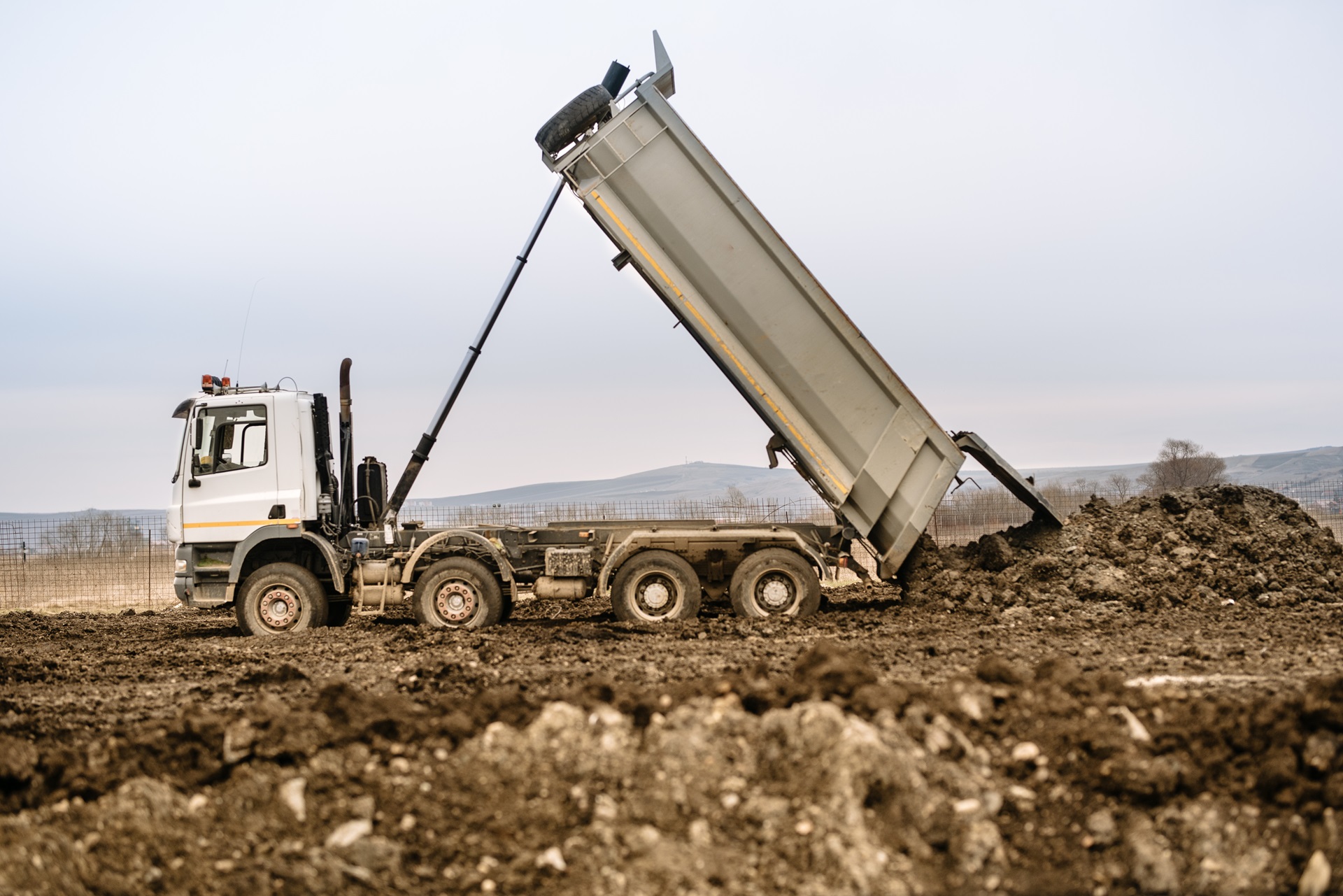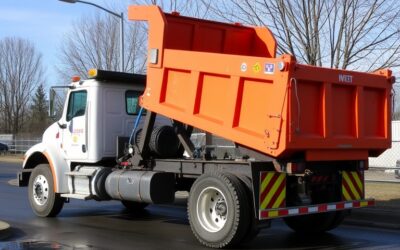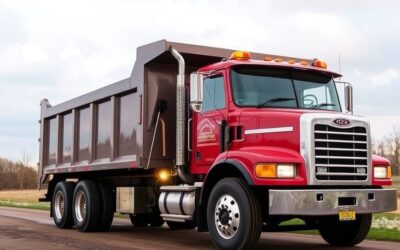Operating dump trucks comes with several hazards that can pose significant risks to drivers and job sites. These large vehicles are essential for various industries, including construction and mining, but their size and functionality make them prone to specific dangers. Understanding these hazards is the first step in creating a safer working environment.
One major concern is the dump truck’s stability, especially when dealing with uneven loads or challenging terrain. Load shifting and improper weight distribution can lead to accidents, including rollovers. These incidents not only jeopardize the driver’s safety but can also cause severe damage to the truck and its cargo.
Advanced technologies like the WINK Anti-Tip device have been developed to address these challenges. This device helps monitor the truck’s balance and provides real-time adjustments to mitigate the risk of roll-overs. By implementing such systems, we can significantly reduce accidents and enhance the overall safety of dump truck operations.
Identifying Major Hazards in Dump Truck Operations
Operating dump trucks poses several inherent hazards that need to be carefully managed to ensure safety. One of the primary hazards is the risk of roll-overs, especially when trucks are loaded unevenly or driven on uneven terrain. Roll-overs can happen suddenly and without much warning, making it crucial for operators to remain vigilant and utilize safety technologies to mitigate this risk.
Another significant hazard is the risk of collisions. Dump trucks have large blind spots, and maneuvering these massive vehicles in confined spaces or busy job sites can lead to accidents. Drivers must rely heavily on mirrors and, in some cases, additional cameras and sensors to gain a full view of their surroundings. Poor visibility and the truck’s size and weight increase the likelihood of collisions with other vehicles, equipment, or workers.
How Load Shifting Affects Dump Truck Stability
Load shifting is a major cause of dump truck instability and can significantly increase the risk of rollovers. When a load shifts, the materials in the truck bed move from their intended position, often to one side of the truck. This uneven weight distribution creates a high center of gravity on one side, making the vehicle more susceptible to tipping over during turns or on inclines.
Several factors contribute to load shifting, including improper loading procedures, uneven terrain, and sudden movements such as braking or sharp turns. Materials like gravel, sand, and rubble can easily move around if not properly secured, exacerbating the problem. Drivers must constantly monitor their load and make adjustments as needed, but this task can be challenging without the aid of modern technologies designed to stabilize the truck automatically.
Using WINK Anti-Tip to Mitigate Roll-Over Risks
The WINK Anti-Tip device is specifically designed to address the issue of roll-overs in dump trucks by offering real-time adjustments to maintain stability. This advanced technology continuously monitors the truck’s tilt and balance, automatically correcting when necessary. The device alerts drivers when the vehicle reaches a critical tilt angle, prompting immediate action to avoid a potentially dangerous roll-over.
One key feature of the WINK Anti-Tip system is its ability to lower the truck bed when an imbalance is detected automatically. By doing so, the device redistributes the weight more evenly across the vehicle, significantly reducing the risk of tipping over.
This correction is crucial during unloading processes, where the sudden shift in weight can be particularly hazardous. The system’s real-time monitoring and automatic adjustments make it an essential tool for enhancing the safety of dump truck operations.
Best Practices for Enhancing Safety with WINK Anti-Tip
Implementing best practices alongside using the WINK Anti-Tip device can further enhance the safety and efficiency of dump truck operations. Regular maintenance checks are vital. Ensure that the Anti-Tip system is functioning correctly and that all sensors and components are in good working condition. Regularly inspecting tires, brakes, and suspension systems also helps maintain overall vehicle stability.
Driver training is another critical aspect. Educating drivers about how to use the WINK Anti-Tip device effectively and understanding its alerts can make a significant difference. Encourage drivers to monitor the load distribution and adjust driving habits based on the system’s feedback. Additionally, proper loading techniques should be enforced to minimize initial imbalances, further supported by the Anti-Tip system’s corrective actions.
Protecting Your Crew & Investment: Addressing Dump Truck Hazards with WINK Anti-Tip
Ensuring the safety and stability of dump truck operations is crucial for preventing accidents and maintaining efficiency. Common hazards such as load shifting and roll-overs pose significant risks, but they can be effectively managed with the right technology and practices. The WINK Anti-Tip device provides a reliable solution by continuously monitoring balance and making real-time adjustments to prevent tipping.
By combining advanced technology with sound operational practices, we can create a safer working environment for dump truck operators. Regular maintenance, proper loading, and driver training are essential components in maximizing the benefits of the WINK Anti-Tip system. Investing in this technology enhances safety, boosts overall productivity, and reduces downtime caused by accidents.
If you’re ready to improve the safety and efficiency of your dump truck operations, consider integrating the WINK Anti-Tip device. Visit Wink Anti-Tip to learn more about how our technology can protect your fleet and ensure safer job sites. Equip your trucks with the best in anti-tip technology today!





